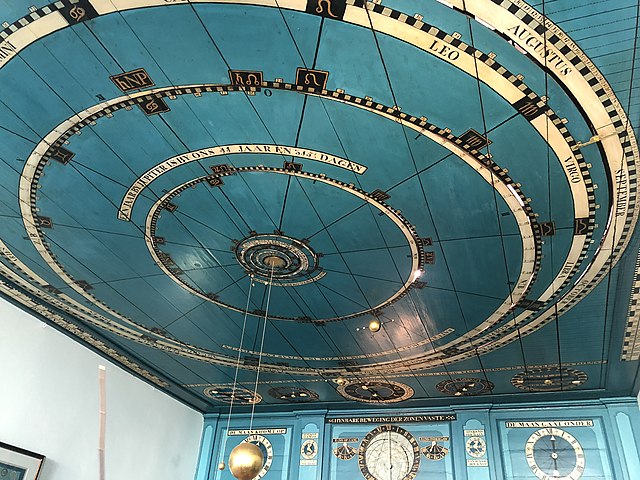“Extraordinary” Franeker planetarium makes Unesco heritage list

A 250-year-old planetarium built into the roof of a private house in Friesland has become the latest Dutch entry on Unesco’s world heritage list.
The Eise Eisinga Planetarium in Franeker is the oldest working planetarium in the world. It was constructed by wool merchant Eise Eisinga as a moving model of the solar system between 1774 and 1781 in the ceiling of his own home.
Eisinga built the planetarium to disprove a theory that certain planets were on a collision course and that the end of the world was imminent, and he hoped his model would demonstrate that the planets were actually in conjunction.
He was, Unesco says on its website, not a scientist in the formal sense but a ‘creative genius who built the planetarium entirely on his own initiative’.
There are already 12 Dutch sites on the Unesco world heritage list, following the addition of the Lower German Limes and the ‘Colonies of Benevolence’ in Groningen and Drenthe last year.
The planetarium, which still works, and the rest of Eisinga’s home, are open to the public.
Dutch destinations: music and mummies in Frisian villages
The Unesco committee which decided to include the site in the listing said it was an “iconic example of an 18th-century orrery [planetarium], representing exceptional creativity in both its extraordinary technical design and execution, and artistic expression.”
The fact it is still in working order is, the committee said, “largely due to the creative genius and foresight of its maker, who left detailed instructions for the maintenance.”
Thank you for donating to DutchNews.nl.
We could not provide the Dutch News service, and keep it free of charge, without the generous support of our readers. Your donations allow us to report on issues you tell us matter, and provide you with a summary of the most important Dutch news each day.
Make a donation